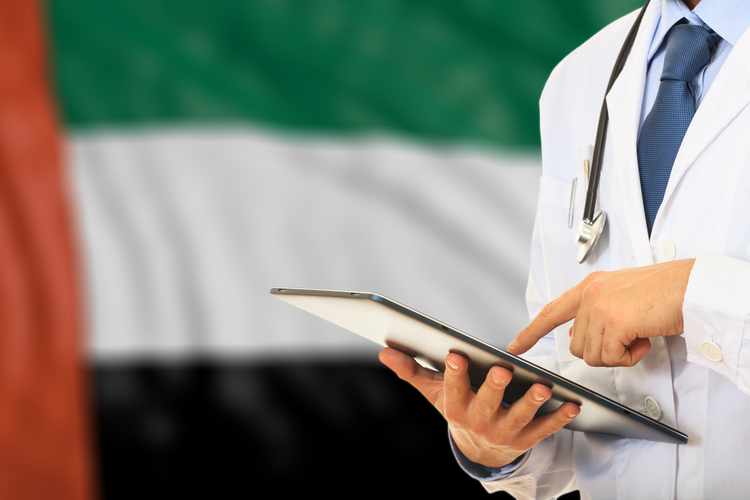GCC Hospitals are Getting Recovered to its Growth Before the Pandemic

According to the latest report by Mashreq Bank in collaboration with the research company Frost & Sullivan, GCC’s hospital sales are forecast to rise by 5.8 % in 2021, as the result of an expansion of medical devices, the rising branded generics market, and expanded investment in infrastructure and innovative technology.
Since the start of the Coronavirus pandemic, most of GCC hospitals’ profits have been significantly impacted by a reduction in the number of outpatients and elective surgery, but it’s expected that the healthcare sector is on track to recover its performance in the first half of 2021 to the pre-coronavirus rate, according to the report.
Mashreq Bank, Head of Healthcare and education Karim Amer, SVP, said: “The Gulf is unquestionably full of opportunities for investors and innovators inside the healthcare ecosystem. New developments have been driven by digital opportunities – for example, the rising demand for eCommerce services is expected to increase the number of eCommerce vendors by 2030. Only in the process will this transition to digital health continue to take hold.”
The report mentioned that a dependence on drug imports and medical equipment, which greatly hindered the healthcare expenditure of the past year, is one of the challenges facing the GCC healthcare sector.
In the United States, for example, 70% of medications in use are generic, while the GCC accounts for just 30%. Furthermore, digital healthcare remains limited in the area and most implementations are still pilot. Private spending in the GCC countries was still below 12-30 %, putting considerable pressure on the public health system.
Karim Amer added the following: “While the UAE focuses on the manufacture and invention of domestic pharmaceuticals, Saudi Arabia will invest heavily in national infrastructure, and Bahrain will aim to attract vast numbers of medical staff in order to fulfill its increasing demand for high-quality healthcare services. As all the countries of GCC, Bahrain in 2021, its demand for medical devices is likely to grow by 25% to 30% as the number of surgical procedures expands.”
Pharmaceutical production is projected to expand in the next few years to $8 to $10 billion in the GCC, with about 25% of multinational corporations now holding talks with local manufacturers about collaborating and producing drugs.
It’s notable that the new fields of development in the life sciences sector as well as the monoclonal antibody and next-generation sequencing solutions and expectations of creating the $7-$10 billion in MENA market for the next two years.
Trends in United Arab Emirates (UAE) healthcare sector in 2021

UAE is Giving the Focus to Local Manufacturing In Pharmaceutical Sector
The United Arab Emirate is scheduled to transition to greater autonomy in 2021, and beyond, on domestically manufactured drugs.
UAE imports products from around 72 countries, but 80% are supplied by 10 countries only. In 2017, there were approximately 18 UAE companies, with this figure projected to grow to 30 by 2021.
Likewise, international scientific offices are forecasted to increase from 30 scientific offices in 2013 to 75 scientific offices by 2021.
The UAE is also the first country to create an efficient rapid framework for the registration of novel drugs, providing access to ‘innovative medications’ within the UAE for both UAE patients and those from the neighboring countries requesting treatment.
In March 2021, The UAE launched a US$300 billion initiative to promote the industrial sector and make it the main engine of the UAE’s economy. By 2031, the UAE will contribute 300 billion dirhams to GDP, more than twice the current contribution.
In operation 300 Billion, Sheikh Mohamed bin Zayed Al Nahyan has stressed that young people need to adapt and use their skills to develop critical future markets, artificial intelligence, space, electricity, and the pharmaceutical industries to increasingly increasing technical developments. Such initiatives ensure sustained economic stability for the next generation and create a stable and prosperous economy.

Trends in Saudi Arabia (KSA) Healthcare Sector in 2021

Saudi Arabia is Giving the Focus to Infrastructure Investments
Healthcare is one of the main pillars of the Saudi Vision 2030 and also the National Transformation Program 2020, Saudi Arabia vision to enhance the quality of care across the country through the leverage of service quality provided by healthcare facilities
The Saudi population is forecasted to grow from 34.4 million in 2019 to 39.4 million in 2030 and might reach 45 million by 2050. The country has a vision towards investments in healthcare infrastructure around SAR 250 Billion till 2030, also one of the objectives of KSA is to increase the contribution of the healthcare private sector from 40% to 65% by 2030.
In 2019, private healthcare will rise from 30% to 65% in 2030. The study predicts private health spending. The infrastructure is likely to account for about 40-50 percent of the spending by 2025 and for digital solutions and medical wearables and implants after 2025.
The report shows its forecasting for the private healthcare expenditure to increase from 30% in 2019 to 65% by 2030, the investment in digital healthcare solutions, healthcare infrastructure, medical consumables, and implants will be 40% – 50% of this investment by 2025, it’s forecasted also that Saudi Arabia will be a hub for medical consumables by 2023.
Trends in Bahrain Healthcare Sector in 2021

Bahrain is Giving the Focus to Digital Transformation
With Bahrain’s national push to digitize healthcare, Investments in the digital transformation of healthcare facilities are very significant. it is probably will reach its peak within the next 2-3 years and attracting investment of about $ 0.5 – $ 0.6 billion by 2025.
Robotic surgery is one of the untapped opportunities that have a growth potential forecasted to be $ 0.3 billion by 2025.
In addition, Bahrain’s medical equipment, medical imaging, IVD, and digital health markets were valued at US$800 million in 2019 and are currently growing at a CAGR of 6% per year.
Value-added products rather than domestic products will create good opportunities for growth in the next five years, and as the government focuses on caring for the elderly, home care products and solutions will be more adopted by 2025.
Trends in Kuwait Healthcare Sector in 2021

Kuwait is Giving the Focus to Infrastructure & Drug Generics
According to the Kuwait vision 2035, the report forecasted that infrastructure development and upgrades will have more investment in the next few years.
Kuwait’s healthcare market has a huge opportunity for pharmaceutical generics, which are expected to be 60% of the total pharmaceutical market volume, the local manufacturers will have a 20% share of this expected revenue.
Domestic pharmaceutical manufacturing will gain its momentum over time, it’s expected to increase from 15% to 30% of the total pharmaceuticals market in Kuwait by 2030.
Trends in Qatar Healthcare Sector in 2021

Qatar is Giving the Focus to Build New Hospitals
The Government strategy in Qatar is to diversify its economic revenues and make parallel sources other than the oil industry which is the backbone of Qatar’s economy.
Medical tourism will gain more prominence to be a focal point in the developing healthcare sector in the next few years.
The report also mentioned that the private healthcare sector will play a major role in enhancing healthcare infrastructure and service provision to the nation to compensate for the increasing healthcare burden.
The development of new healthcare facilities will continue to build several new hospitals and clinics under construction to meet the increasing demand for specialized care. This is consistent with the long-term objective of the Ministry of Public Health to hit 5,700 hospital beds by 2033.
As several new hospitals and clinics are currently being built to meet the growing demand for professional services, the construction of new facilities is expected to continue. This is in line with the Ministry of Health’s long-term goal of reaching 5,700 hospital beds by 2033.

